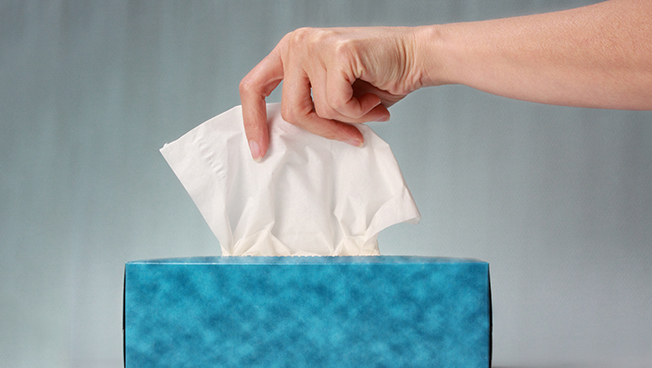The snow has melted, birds are singing and the flowers are starting to bloom. Unfortunately, for millions of allergy sufferers, that means it’s sneezing season…
Ah-ah-achoo!
But spring shouldn’t be miserable, and it doesn’t have to be. We talked to a couple of allergy experts to learn how technology can help you minimize the sniffles and sneezes.
Here are three examples:
1) Allergy apps
There are some great smartphone apps, such as Pollen.com’s Alergy Alert and WebMD Allergy, that provide info on the pollen index in your area. You can use them to know when local pollen counts — and your allergies — will be at their worst, and then plan accordingly.
As pollen counts start to rise, make sure to limit your time outside and shut your windows. And it’s probably time to start taking your nasal spray or other allergy medications, too.
“Think of it like a fire. If you see smoke, shouldn’t you get the hose then?” said Dr. Jackie Eghrari-Sabet, an allergist in Gaithersburg, Maryland. “If you wait to take your allergy medications until your nose is totally congested and runny, and you’re sneezy and miserable, you can’t dig out of that hole.”
You can also use your smartphone to make sure you don’t miss an appointment (or allergy shots) at your allergist. Set calendar reminders for yourself, or ask your doctor to send electronic reminders via text or email.
2) HEPA vacuums
On high-pollen days, do your best to keep the pollen outside where it belongs. Keep your windows and doors closed, and turn on the air conditioning. And whenever you return home after spending time outdoors, take off your shoes, change your clothes and wash your hands, face and hair to avoid tracking pollen through your house.
Despite your best efforts, some allergens will find their way inside, so it’s important to keep your floors and furniture clean.
A good vacuum can go a long ways toward helping you feel better by sucking up the pollen, dust mites and pet dander. But make sure you’re using the right one.
“If you use a vacuum sweeper, it has to have a HEPA filter on it,” said Dr. Neil Kao, an allergist in Greenville, South Carolina.
HEPA stands for high-efficiency particulate air. Government regulations require HEPA filters to remove at least 99.97 percent of particles 0.3 microns or larger, which means they’ll trap all airborne pollens.
Allergists also recommend using a special mattress cover to block allergy-inducing dust mites. And, sorry, but you really should kick your cats and dogs — and their dander — out of the bedroom, too.
3) Air purifiers
Air purifiers are another good way to make allergy season more pleasant. They can filter out pollen, mold, pet dander and other common irritants to improve the air quality and help you breathe easier.
But, like with the vacuums, be sure to use a model that has a HEPA filter, and remember to change it as directed. It’s also important to choose the right model for the size for your room. (A larger room requires a higher-capacity air purifier.)
“Think of them like a little heater or air conditioner,” Jackie said. “If you brought a little heater in to heat your whole house, it’s never going to do that. You can’t stick it in your giant ballroom-sized dining room and think it’s going to purify the air. It’s got to be in a closed environment in a small space.”
That makes your bedroom a prime location. You spend a lot of time there, and it’s a smaller room where you can close the doors.
“When it’s beautiful outside, you’re not sitting around the kitchen table, you’re outside at the picnic table,” Jackie said. “The time you spend inside is really just to sleep.”


